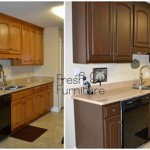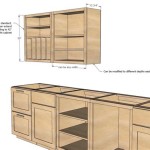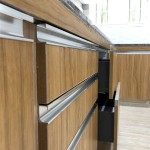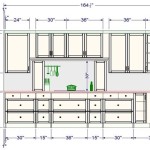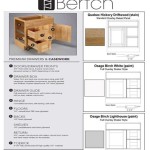How to Repair Kitchen Cabinet Laminates: A Comprehensive Guide
Kitchen cabinets endure a lot in daily use, facing wear and tear, moisture, and potential damage. When their laminate surfaces suffer damage, it can not only diminish their functionality but also impact the overall aesthetics of your kitchen. Fortunately, repairing laminate kitchen cabinets is a manageable task that can restore their pristine condition with the right materials and techniques.
Materials Required:
- Sandpaper (120-grit, 220-grit)
- Laminate repair kit (color-matched filler)
- Putty knife
- Clean cloths
- Lacquer thinner (optional)
Steps for Laminate Cabinet Repair:
1. Clean the Damaged Area:
Thoroughly clean the damaged area with a damp cloth to remove any debris or dirt. Allow it to dry completely before proceeding.
2. Sand the Edges (Optional):
In cases where the laminate is chipped or cracked, use 120-grit sandpaper to gently sand the edges of the damage. This will help the filler adhere better.
3. Apply the Laminate Filler:
Mix the laminate filler according to the manufacturer's instructions. Using a putty knife, apply the filler into the damaged area, filling it completely. Smooth out the surface with the putty knife.
4. Dry and Sand:
Allow the filler to dry completely per the manufacturer's recommended time. Once dry, sand the repaired area with 220-grit sandpaper to smooth the surface and remove any excess filler.
5. Clean Again:
Wipe away any dust or debris from the repaired area with a clean cloth.
6. Optional: Use Lacquer Thinner (for Glossy Laminates):
If your cabinet has a glossy laminate finish, apply a small amount of lacquer thinner to a clean cloth and gently dab it over the repaired area. This will help blend the filler with the laminate and restore its shine.
7. Buff and Protect:
Buff the repaired area with a clean cloth to remove any remaining residue. To protect the repair, apply a clear polyurethane finish or wax specifically designed for laminates.
Additional Tips:
- Match the laminate filler color as closely as possible to the existing laminate.
- Use a light touch when sanding to avoid damaging the surrounding laminate.
- If the damage is extensive, consult a professional cabinet refinisher.
Conclusion:
Repairing laminate kitchen cabinets is a relatively straightforward task that can significantly improve their appearance and functionality. By following these steps and using the appropriate materials, you can restore the beauty and durability of your kitchen cabinets with ease. Remember to take your time, pay attention to detail, and enjoy the satisfaction of a successful repair.

How Do I Fix Laminate Cabinets Hometalk

My Laminate Drawers And Doors Are Ling Ing Help Hometalk

Painting Laminate Kitchen Cabinets Cuckoo4design

How Do You Paint Laminate Kitchen Cupboards When They Re Ling Hometalk

Painting Laminate Kitchen Cabinets Cuckoo4design

The Easiest Way To Repair Laminate Countertop Chips Exquisitely Unremarkable

How Can I Repair Ling Kitchen Cabinet Laminate Hometalk

How To Repair Ling Veneer On Particle Board Cabinets Handhills

How To Paint Water Damaged Laminate Kitc Bunnings Work Community

How To Fix Ling White Cabinets Kitchen Laminate Cabinet Repair
Related Posts

